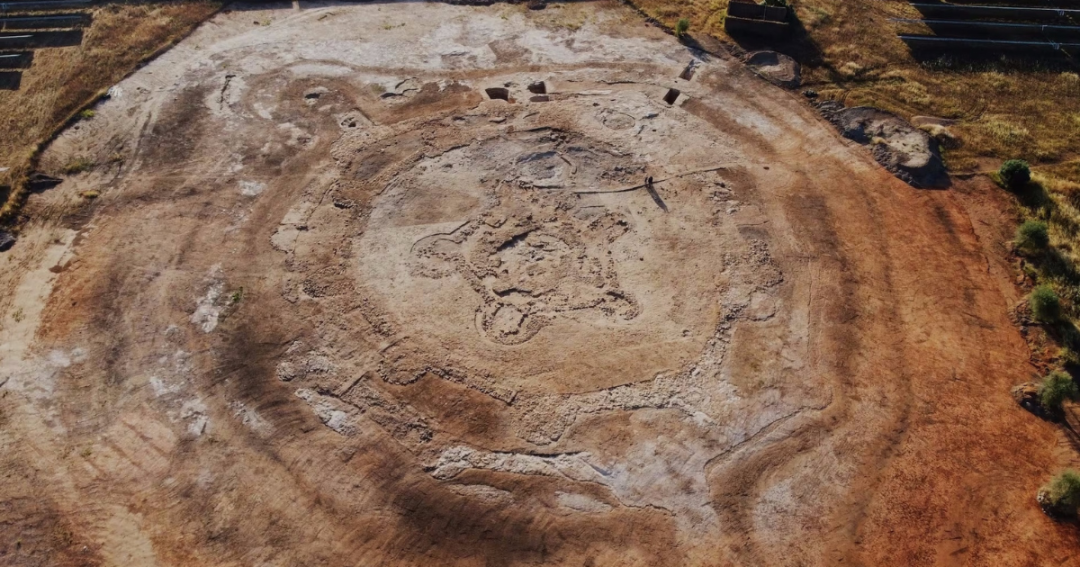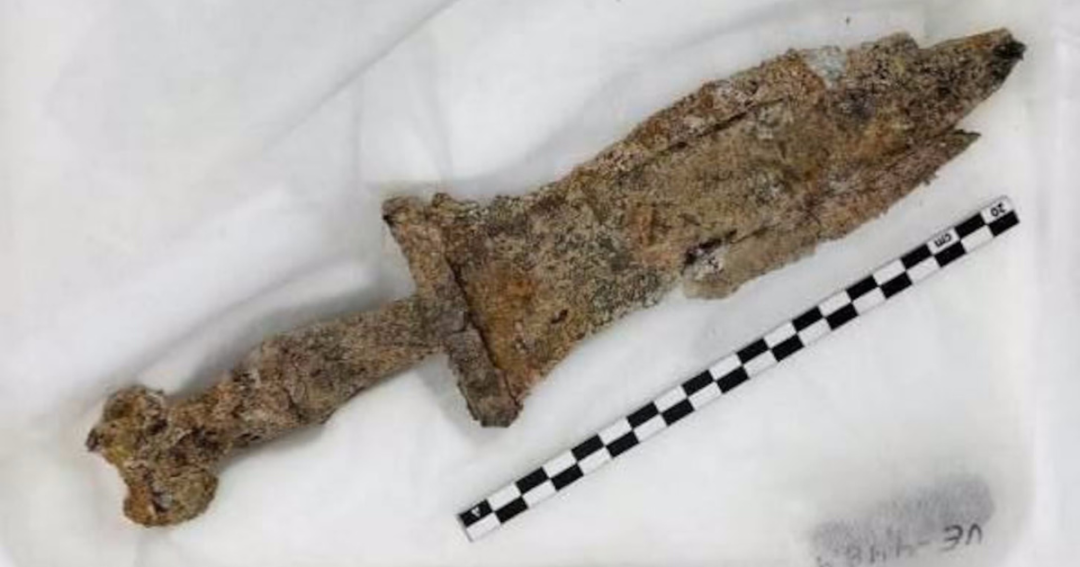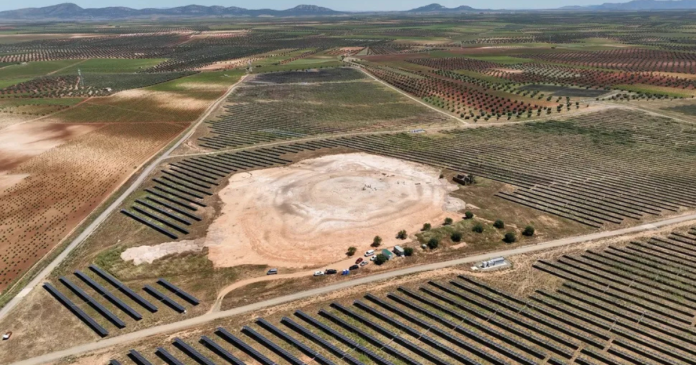Almendralejo, Spain — A remarkable archaeological discovery at of a Spanish fortress on the ancient hilltop site of Cortijo Lobato in southwestern Spain has revealed a rare blend of histories: a 5,000-year-old Chalcolithic fortress containing the mysterious burial of a Roman-era man interred with a military dagger. The find, announced by excavation leader César Pérez of Tera S.L. Archaeology, bridges two distant eras and raises compelling questions about the site’s enduring significance.
Key Findings
- Ancient Fortress: Builders during the Chalcolithic period (c. 3200–2200 B.C.) constructed the fortress with advanced defensive architecture—concentric walls, bastioned enclosures, and a sophisticated water reservoir. Strategists likely designed it as a regional stronghold, which attackers violently destroyed around 2450 B.C.
- Roman Burial: Excavators discovered the skeleton of a man aged 25–35 near the fortress’s collapsed outer wall. He carried a pugio, a Roman military dagger. Radiocarbon analysis dated his death to the Roman occupation of Iberia (218 B.C.–4th century A.D.), more than 2,500 years after the fortress fell into ruin.
The Mystery
The burial’s context is unprecedented. No other Roman-era artifacts or remains have been identified at the site, leaving archaeologists puzzled. Pérez proposes several theories:
- Military Connection: The dagger suggests the man was a soldier, possibly a deserter or casualty of conflict.
- Ritual or Symbolic Burial: Romans occasionally repurposed ancient monuments for burials, hinting at cultural reverence for the site’s antiquity.
- Isolated Tragedy: The man may have died from disease, accident, or violence unrelated to the fortress’s history.

Fortress of the Copper Age
Discovered in 2021 during surveys for a solar energy project by Acciona Energia, Cortijo Lobato has reshaped understanding of early Iberian societies. The fortress spans over 3 acres (1.2 hectares) and includes:
- A pentagonal central enclosure fortified by two concentric walls and four defensive ditches.
- Bastions up to 20 feet (6 meters) wide reinforcing walls originally 6.5 feet (2 meters) thick.
- Narrow gates designed to restrict entry to one person at a time.
Evidence of fire and destruction points to a catastrophic attack around 2450 B.C., though the attackers and defenders remain unidentified.

Archaeological Significance
The fortress’s scale and complexity indicate a highly organized society with expertise in siege warfare. “This was not just a village—it evolved into a strategic defensive hub,” Pérez noted. The later Roman burial adds a unique layer of intrigue, suggesting the site retained symbolic importance millennia after its abandonment.
Ongoing Research
Tera S.L. archaeologists continue to study the site, now preserved within the operational solar plant. Advanced analyses of the skeleton, dagger, and soil samples aim to clarify the man’s origins, cause of death, and connection to the fortress.
Image credits: Tera S.L. Archaeology/Acciona Energia

